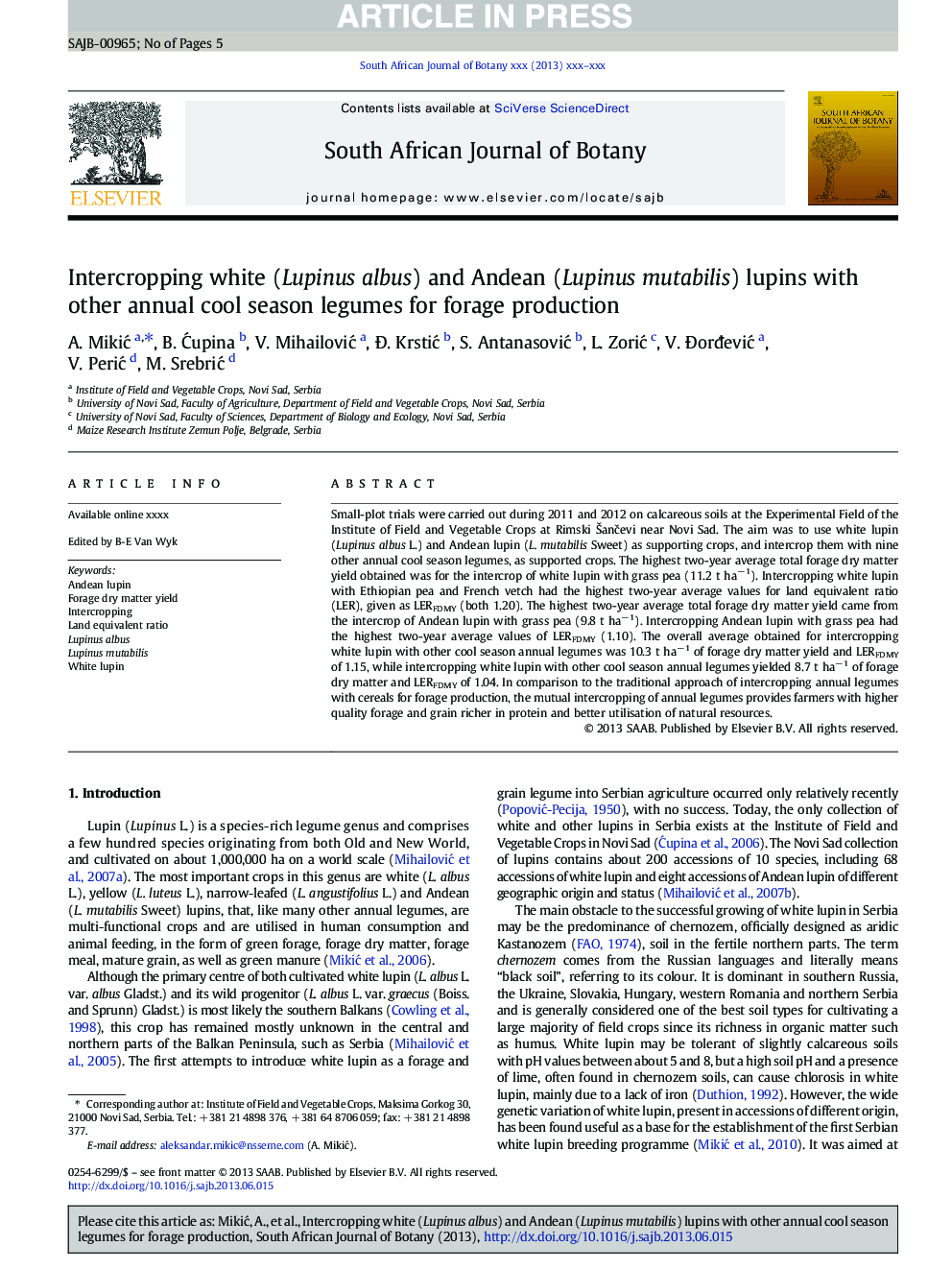| Article ID | Journal | Published Year | Pages | File Type |
|---|---|---|---|---|
| 6379040 | South African Journal of Botany | 2013 | 5 Pages |
Abstract
Small-plot trials were carried out during 2011 and 2012 on calcareous soils at the Experimental Field of the Institute of Field and Vegetable Crops at Rimski Å anÄevi near Novi Sad. The aim was to use white lupin (Lupinus albus L.) and Andean lupin (L. mutabilis Sweet) as supporting crops, and intercrop them with nine other annual cool season legumes, as supported crops. The highest two-year average total forage dry matter yield obtained was for the intercrop of white lupin with grass pea (11.2 t haâ 1). Intercropping white lupin with Ethiopian pea and French vetch had the highest two-year average values for land equivalent ratio (LER), given as LERFDMY (both 1.20). The highest two-year average total forage dry matter yield came from the intercrop of Andean lupin with grass pea (9.8 t haâ 1). Intercropping Andean lupin with grass pea had the highest two-year average values of LERFDMY (1.10). The overall average obtained for intercropping white lupin with other cool season annual legumes was 10.3 t haâ 1 of forage dry matter yield and LERFDMY of 1.15, while intercropping white lupin with other cool season annual legumes yielded 8.7 t haâ 1 of forage dry matter and LERFDMY of 1.04. In comparison to the traditional approach of intercropping annual legumes with cereals for forage production, the mutual intercropping of annual legumes provides farmers with higher quality forage and grain richer in protein and better utilisation of natural resources.
Related Topics
Life Sciences
Agricultural and Biological Sciences
Agronomy and Crop Science
Authors
A. MikiÄ, B. Äupina, V. MihailoviÄ, Ä. KrstiÄ, S. AntanasoviÄ, L. ZoriÄ, V. ÄorÄeviÄ, V. PeriÄ, M. SrebriÄ,
